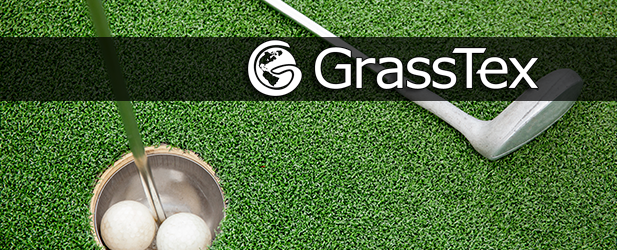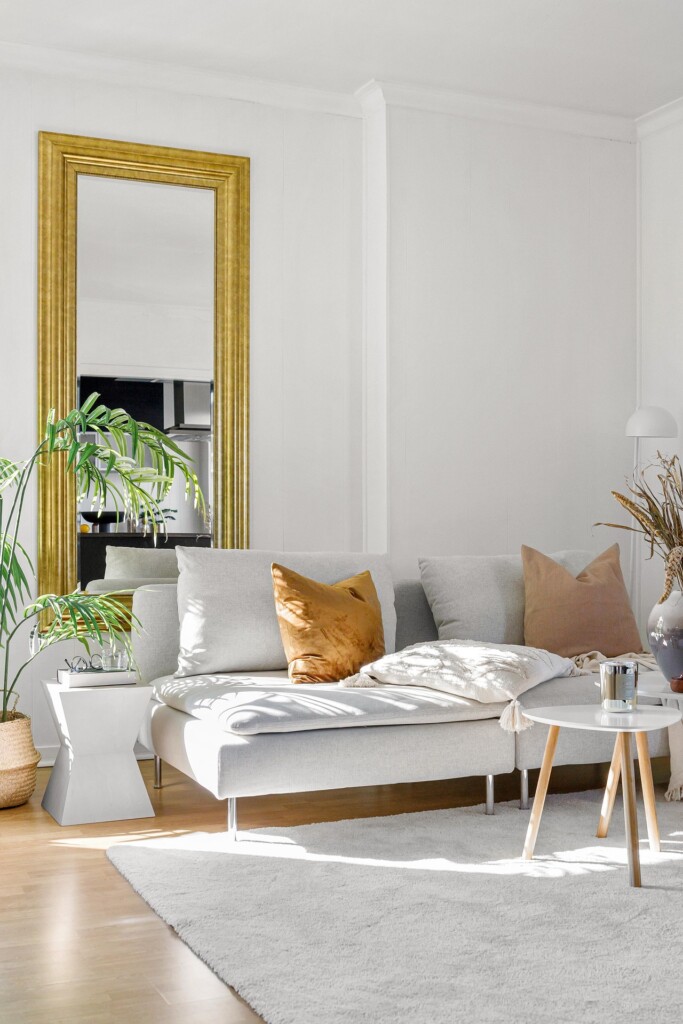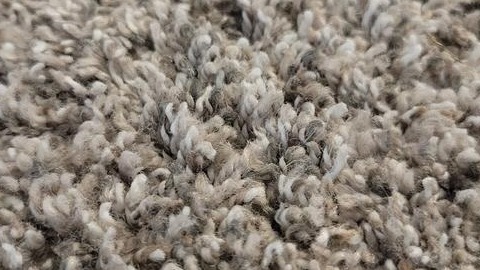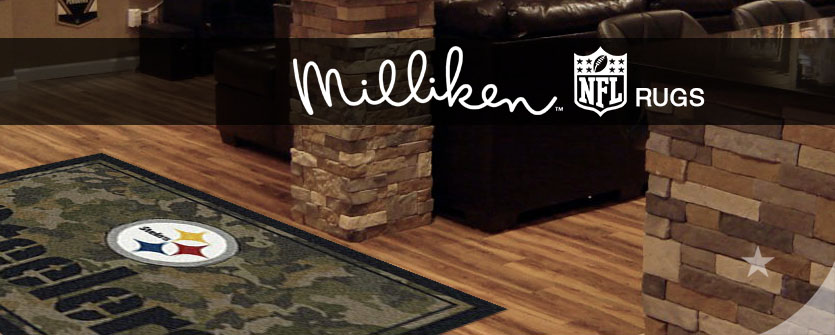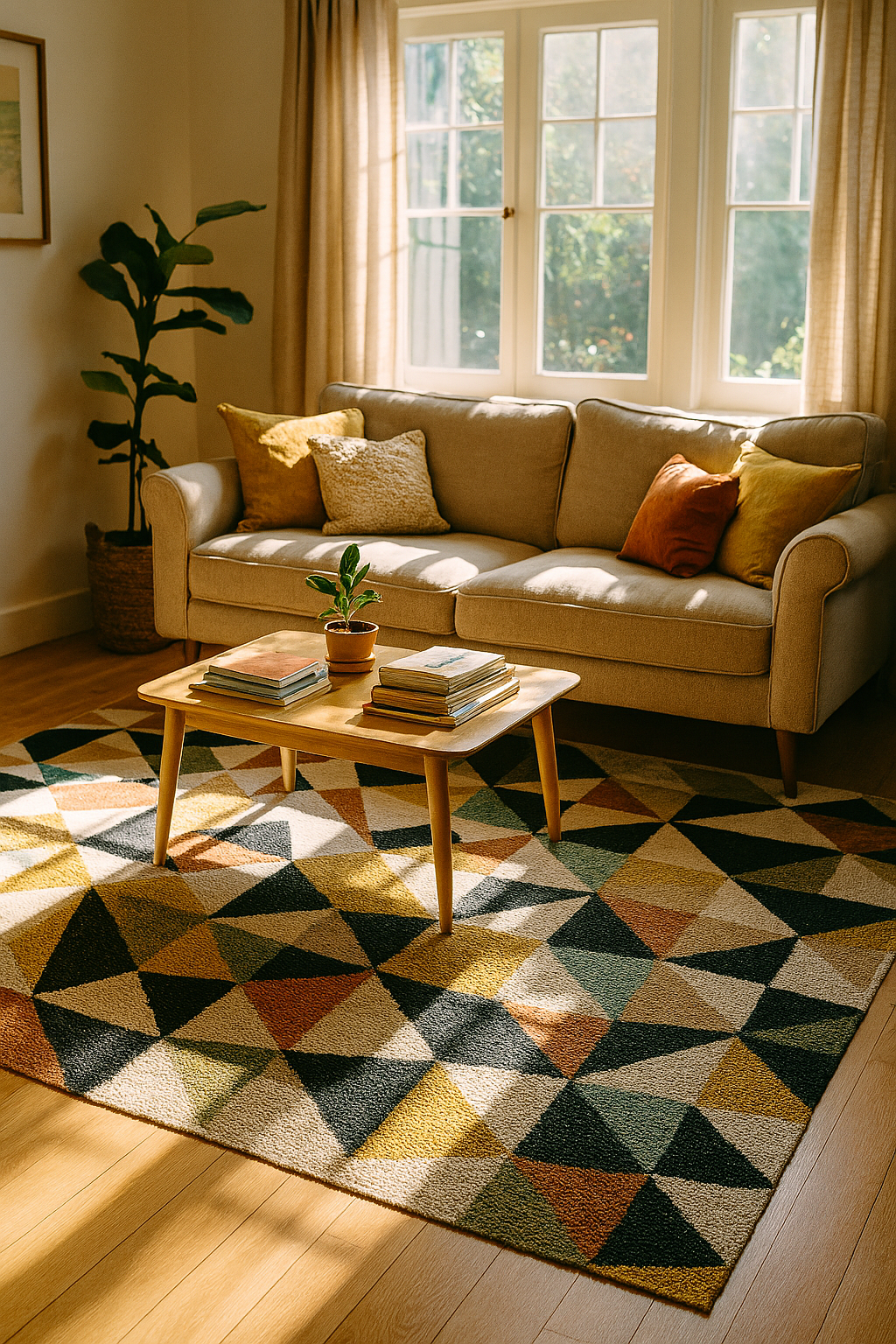
A bright and inviting living room featuring a large geometric-patterned rug on light hardwood floors. Modern furniture, throw pillows, coffee table, and a small plant complete the cozy, lived-in look. Natural sunlight fills the room, highlighting how the rug anchors the space and adds warmth and style.
Rugs. There’s an ongoing debate in home design circles—and by “circles,” I mean anyone who’s ever rearranged their living room at 10 p.m.—about whether rugs are really necessary. It seems like yet another thing you have to deal with, right? Does it match up with the symmetry of the furniture? Why is there so much dog hair? When did we get a dog? How is it matching my floor? I’m going to burn/throw this thing away!
All valid concerns, and maybe a bit overdramatic. But the point remains: rugs are any room’s biggest asset when it comes to making a space feel good. They soften hard floors, define open layouts, and instantly add an air of coziness to a room.
In this article, we’re going to explore why rugs are the best thing you can do for your floor—and how rug and flooring combinations can transform your space.
Let’s be perfectly honest—when you move into a place, or when you’re thinking about how you want a space to look, are you really thinking about the floor? We spend so much time obsessing over wall color, furniture, decorations, etc., that we forget the floor—and what goes on it—plays a key role in room aesthetics.
Rugs anchor the space and become a focal point you can design around. Geometric patterns or bold colors can easily accent the room they lay in, giving it a much-needed dose of personality. It’s also easier to “zone” out your space using rugs as visual checkpoints. This is especially true of open-plan layouts, marking where the living room ends and the kitchen begins.
Why Rugs Are Essential in Any Space

A chevron rug can turn a simple floor into a statement—one zig and zag at a time.
The big thing nobody expects? Rugs and flooring are a dynamic duo that make everything in the room better. They hype each other up, make each other look good, and, on occasion—when a questionable design decision gets made—cover for one another. Literally.
A rug doesn’t hide the floor; it accentuates the positives and buries the negatives. Bright white oak hardwood? Throw a dark-colored rug in the center of the room and suddenly you’ve added depth that makes the room feel larger. Dark floor with a light rug? Congratulations—you’ve created a cozy focal point that instantly centers the room.
While looks are what most people think of first, the real benefits come from protection. That aforementioned mystery dog? He’s going to mark up a hardwood floor just by existing. Laminate prides itself on being low-maintenance, but the moment water shows up—good luck. And tile? Tile makes any room sound like you’re living in a parking garage, and not a nice one either.
Rugs protect these floors from basically everything you can imagine—and look good doing it. Preventing pesky pet scratches, soaking up spills before they turn into problems, and, of course, dampening sound so your home doesn’t echo like you’ve angered the acoustics gods.
Rug and Flooring Combinations That Actually Work
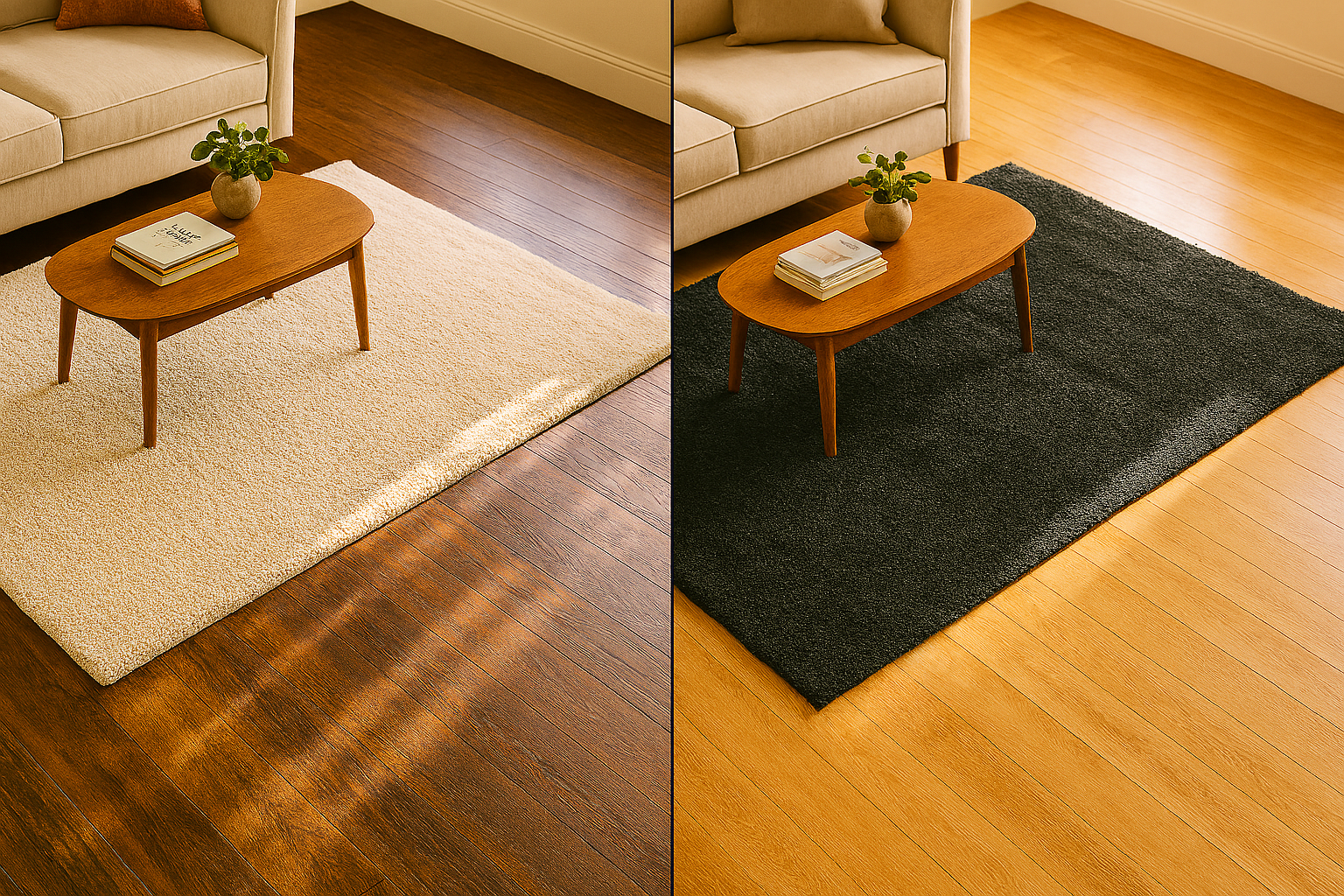
Opposites attract: contrasting rug and floor combos that make any space feel intentional.
Here are some fail-proof pairings for your home:
Light Floors + Dark Rugs
Depth, contrast, and a room that suddenly feels intentional. Great for bright oak, maple, or bleached hardwood.
Dark Floors + Light Rugs
Creates visual breathing room and softens the entire space. Works beautifully with walnut, mahogany, or dark-stained oak.
Rugs for Hardwood, Laminate, and Tile
-
Hardwood: Protects from scratches and adds warmth.
-
Laminate: Guards against moisture and furniture scuffs.
-
Tile: Softens sound and prevents cold, echoey floors.
These combos don’t just look good—they make rooms feel balanced, grounded, and intentional.
Pattern Play: Choosing a Rug That Doesn’t Fight Your Floors

Pattern picking: the part of design where chaos becomes art.
Here’s where things get fun—and mildly overwhelming. Rug patterns come in such variety that picking one can feel like hunting for buried treasure. Geometric? Vintage? Some oddly specific modern design that no one is sure what to call? Too many choices, not enough time or willpower.
But the great news is that patterns aren’t just for style. They can distract, enhance, anchor, and highlight depending on the room.
Geometric patterns, for example, train the eye and add visual structure. They also allow for a lot of customization. A large-scale geometric rug can stretch a small space visually—like those optical illusion photos, except this actually works.
Large rooms feeling cavernous and cold? Go with a smaller rug featuring a tighter pattern. It adds texture and warmth so you don’t feel like you’re living inside a fancy museum exhibit.
For extra spice, there are a few pattern effects worth remembering:
-
Stripes elongate a room
-
Chevron pulls the eye forward
-
Diamonds add symmetry and complement furniture layouts
Now—it’s not all sunshine and roses. One might assume you can throw any old rug in a room and call it a day, but this simply isn’t the case. With great rug power comes great rug responsibility… or something like that.
Choosing a rug that’s too small for your furniture?
“Man, that’s a nice couch—where’s the rest of it?”
Have a floor with a strong grain pattern?
You’ll want a milder rug; otherwise, those two are fixing to scrap.
Heed the advice above: don’t ignore pattern scale.
-
Big room = bold patterns
-
Small room = soft patterns
Anything else risks looking busy and chaotic. Your rug should complement your floor—not look like it woke up and chose violence.
Rugs Do More Than Look Pretty (Which Is Honestly Rude of Them)
Rugs are doing 20 jobs while asking for zero credit. They reduce echo, keep your feet warm, stop your furniture from sliding around like it’s auditioning for an ice-skating routine, and protect floors from pets, spills, and “oops” moments nobody admits to.
They’re basically the unsung heroes of interior design—quietly working backstage while the furniture gets all the applause.
The Floor’s Best Friend (And Yours, Too)

The unsung hero of comfort: a boho-inspired living room where a layered area rug brings warmth, protects hardwood floors, and creates a cozy, inviting space.
At the end of the day, rugs aren’t just optional décor—they’re the quiet powerhouse of any well-designed room. They anchor your layout, soften the echo of your life choices, hide the sins of both pets and past tenants, and bring enough personality to make even the plainest space feel intentional. They’re like the friend who shows up with snacks, compliments your couch, and doesn’t judge your questionable throw-pillow collection.
Whether you’re working with bright oak, deep walnut, tile that definitely came with the house, or laminate that’s just trying its best, a rug brings balance, warmth, and structure. And when you throw pattern into the mix—geometric or otherwise—you’re not just decorating. You’re designing with purpose.
So the next time you find yourself debating whether you really need a rug, remember this:
Your floor is the largest surface in your home.
Your rug is the easiest way to make it look amazing.
Together? They’re unstoppable.
Give Your Floors the Upgrade They Deserve in Dalton, GA
Ready to transform your home with the perfect rug and flooring combination? Don’t wait. Visit American Carpet Wholesalers or contact us today to find the rug that will anchor your space, protect your floors, and add personality to every room in your home.


